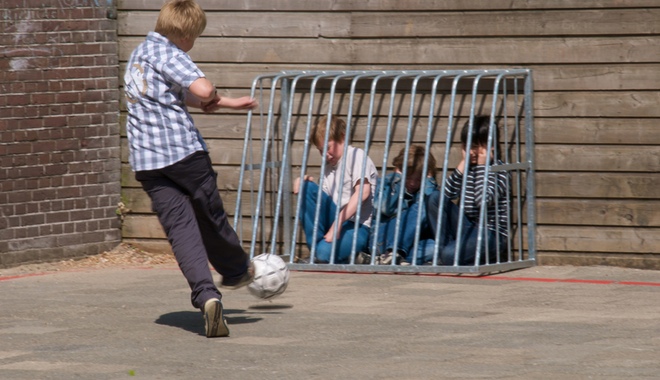
Bullying is never OK. Image: trix0r http://www.flickr.com/photos/trixer/3531445744/
What is bullying?
Bullying is behaviour that:
- is meant to be hurtful;
- targets a certain person or group of people;
- happens more than once; and
- embarrasses, threatens or intimidates the person being bullied.
- single episodes of social rejection or dislike;
- single episode acts of nastiness or spite;
- random acts of aggression or intimidation;
- mutual arguments, disagreements or fights.
Types of bullying
According to the National Centre Against Bullying Bullying there are four types of bullying behaviour.
- Physical bullying that includes punching, hitting and kicking. Obviously this doesn’t happen online.
- Verbal bullying includes name calling, insults, racial and homophobic slurs, and teasing.
- Covert bullying which includes pulling faces, spreading lies and rumours, mimicking, and encouraging others to exclude someone.
- Cyber bullying includes elements from both of points 2 and 3 above.
The cost of bullying
- Bullying can lead to mental and physical health issues in the victim;
- Bullying at work costs businesses billions in lost productivity;
- Bullying leads to people being less engaged and anxious;
- Young people who are bullied often go on to be bullies themselves;
- Young people who are serial bullies often go on to participate in criminal activities.
How to spot an online bully
There are several ways to spot an online bully. These include:
- They attack someone for expressing a different point of view;
- They ignore people in conversations;
- They exclude people e.g. by not tagging someone in a photo or post;
- They talk about someone so that others know who they’re talking about but not mentioning their name;
- They talk about someone as if they’re not present even though they know the person would be aware of their comments;
- They gang up on people;
- They overtly or covertly threaten;
- They ‘shout’ by using ALL CAPS;
- They use sarcasm inappropriately.
What to do if you spot a bully
There’s lots that can be done. Here a few ideas.
- Decide if the person really is a bully. Sometimes people who come across as nice people can be the worst bullies. In other cases some people who are blunt aren’t bullies – they just lack good social skills. Take the time to get some perspective and decide if the person’s behaviour warrants being labelled as bullying.
- Don’t respond if you’re angry or upset. Take some time to let your emotions settle.
- Take a stand. Bullies thrive on bystanders. Even if you’re not the target of the bullying it’s good to say something.
- Avoid participating in the bully’s conversation. Hitting the Like button or engaging in the conversation, even if you’re not actively supporting the bully, can be construed as endorsing their behaviour.
- Don’t feed the trolls. Bullies are often trolls and trolls love nothing more than a good scrap. Don’t give them what they want.
- Offer your support to those who are targeted by a bully.
- Consider unfriending or blocking the bully.
- If their behaviour persists and you don’t feel safe, report them to the site administrator.
